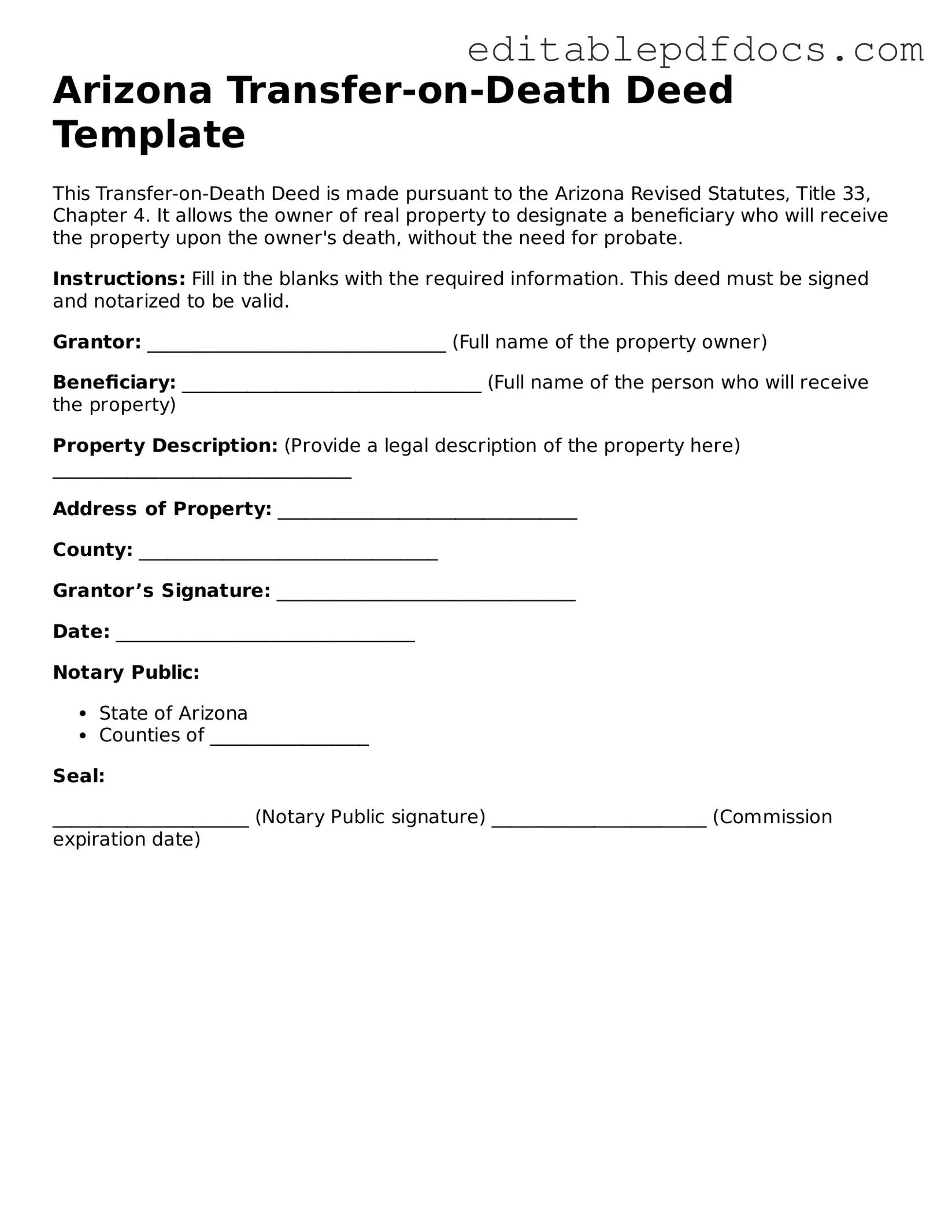Transfer-on-Death Deed Document for Arizona
The Arizona Transfer-on-Death Deed form is a legal document that allows property owners to designate beneficiaries who will receive their property upon their death, bypassing the probate process. This form provides a straightforward way to transfer real estate while maintaining control during the owner's lifetime. For those interested in securing their property for loved ones, filling out the form is a crucial step; click the button below to get started.
Open Editor Now
